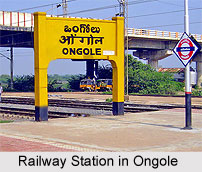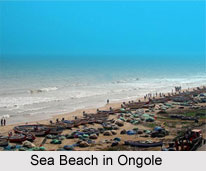 Ongole is a city and a Municipal Corporation in Prakasam district in the state of Andhra Pradesh. Ongole serves as the administrative headquarters of Prakasam District.
Ongole is a city and a Municipal Corporation in Prakasam district in the state of Andhra Pradesh. Ongole serves as the administrative headquarters of Prakasam District.
Location of Ongole
Ongole is located at 15.5 degree north to 80.05degree east. It has an average elevation of 10 meters. The city is popular for its Ongolu Gitta i.e. the Ongole breed of oxen. This is one of the major Zebu cattle breeds in the world. Ongole is a Parliament constituency in Andhra Pradesh.
History of Ongole
The city of Ongole dates back to the era of the Mauryas and Satavahanas. They had extended most of their rule in Andhra Pradesh. Few inscriptions dating to the Satavahana period were found in a village called China Ganjam, near Ongole. After the Satavahanas, Ongole was next ruled by the Kakatiya dynasty. During their rule the nearby towns of Motupalli and Voda Revu served as major seaports.
 Ongole also finds its mention in the inscriptions of the Pallava Dynasty during the 3rd and 4th Century A.D.
Ongole also finds its mention in the inscriptions of the Pallava Dynasty during the 3rd and 4th Century A.D.
Demography of Ongole
According to the Population Census in the year 2011, the city had a population of 202,826. The population constitutes 101,728 males and 101,098 females and a sex ratio of 994 females per 1000 males, higher than the national average of 940 per 1000. At about 18,673 children are in the age group of 0-6 years, of which 9,651 are boys and 9,022 are girls and a ratio of 935 per 1000. The average literacy rate stands at 83.57 percent (male 89.41%; female 77.73%) with 153,888 literates, significantly higher than the national average of 73.00%.
Economy of Ongole
Ongole serves as one of the major centres for tobacco trading in Prakasam District of Andhra Pradesh. The family farming and agriculture is the primary industry of Ongole. It was initiated by the agricultural families within Prakasam district. Many small scale manufacturing enterprises have been set up here during the 70`s and 80`s like the shoes, paints, PVC, pharmaceuticals. Many hospitals and educational institutions have also been established here and in the end of the 90s, granite mining, cutting and polishing companies sprang up around Ongole. With the passage of time many schools and colleges have been developed here. With the advent of reforms in the educational sector, a few private engineering and medical colleges have been set up in the city. Ongole is well-known for the breed of bulls in their region. This has been exported to a number of countries. Even the Brahmana bull in America is an offshoot of the Ongole. The original breed of Ongole stud bulls are found in a small region around Ongole City between rivers Gundlakamma River, and Musi River. Short horned Ongole bulls resemble Nandi sculptures seen in temples dedicated to Lord Shiva.



















